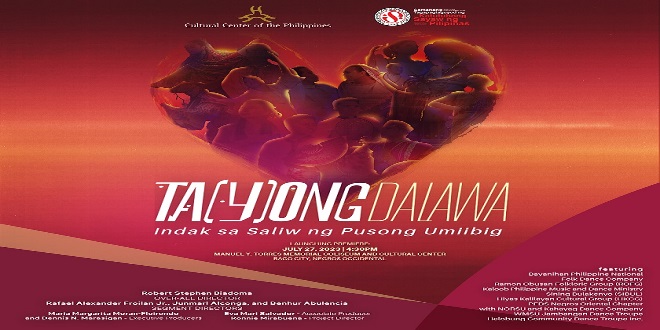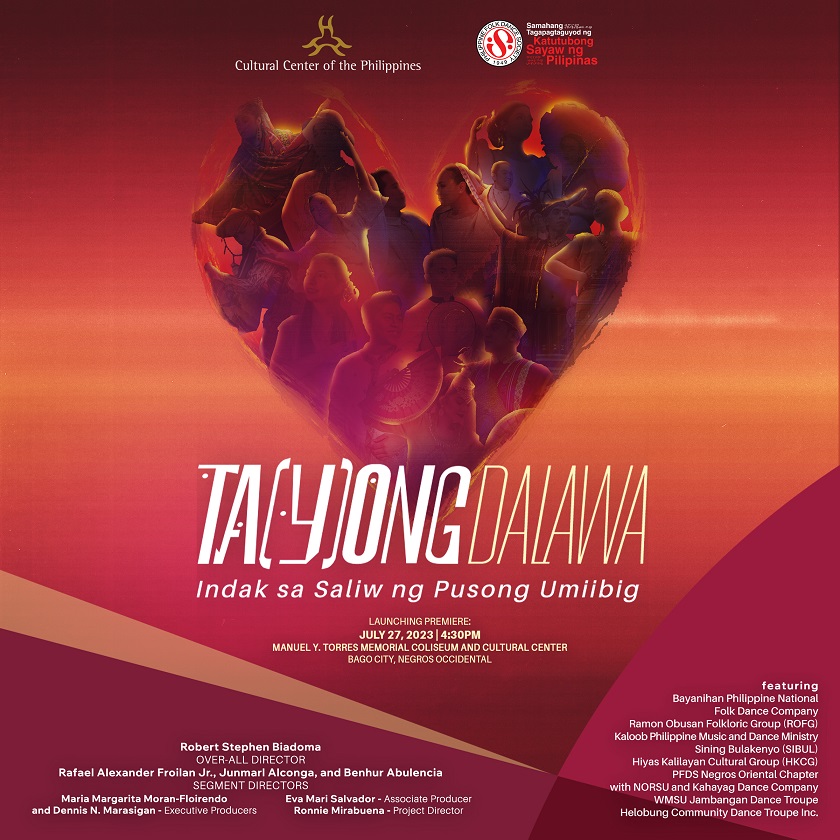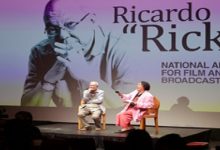
The Cultural Center of the Philippines (CCP) is taking a bold step forward in its commitment to preserving and promoting folk and indigenous arts by launching the third batch of instructional videos on folk and indigenous dances. This exciting initiative, titled “T(A)YONG Dalawa: Indak sa Saliw ng Pusong Umiibig,” focuses on courtship, wedding, and romantic dances from various regions in the Philippines.

The grand unveiling of “T(A)YONG Dalawa” is scheduled for the National Folk Dance Workshop, set to take place on July 27, 2023, at the Manuel Y. Torres Memorial Coliseum and Cultural Center in Bago City, Negros Occidental. The project features instructional videos for eight carefully selected folk and indigenous dances, each shedding light on the rich cultural contexts of romantic love.
The chosen dances are divided into two categories: popular and unpublished. Among them are noteworthy performances like “Salip: Ligawan sa Kumot” by the Kaloob Philippine Music and Dance Ministry, “Kuratsa: Ki-ay han Hul-os nga Gugma” by the Ramon Obusan Folkloric Group, and “Singkil: Sagip sa Sintang Ibig” by Bayanihan, The National Folk Dance Company of the Philippines.
Additionally, the instructional videos include valuable insights into the historical and cultural backgrounds of each dance, details about the indigenous musical accompaniment, showcasing the instruments used and basic rhythms, information on costumes and props, unique dance movements, and captivating five to seven-minute short films on each dance.
CCP president Margie Moran-Floirendo expressed her enthusiasm for the project, highlighting its alignment with the institution’s mission to promote and preserve Filipino arts and culture. Through “T(A)YONG Dalawa,” modern technology is harnessed to document and catalog existing Philippine folk and indigenous dances, making knowledge and skills accessible to as many dance practitioners as possible.
One of the primary goals of this endeavor is to create awareness among the younger generations about the rich and diverse heritage of Philippine dance. The project aims to provide accurate information on the origins, specific characteristics, and socio-cultural significance of these folk and indigenous traditions.
This remarkable endeavor is a collaborative effort involving the Philippine Folk Dance Society (PFDS) and various cultural communities in the Philippines. Spearheaded by the CCP Arts Education Department, the project is under the artistic direction of Robert Stephen Biadoma, with Rafael Alexander Froilan Jr., Junmarl Alconga, and Benhur Abulencia serving as segment directors for the unpublished dances.
In conclusion, “T(A)YONG Dalawa: Indak sa Saliw ng Pusong Umiibig” represents the CCP’s unwavering dedication to celebrating and preserving the beauty of Filipino folk and indigenous arts. By leveraging technology and collaborative efforts, this project paves the way for a brighter future where the nation’s dance heritage can be appreciated and cherished by generations to come.






